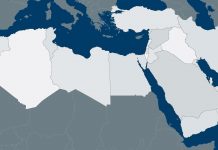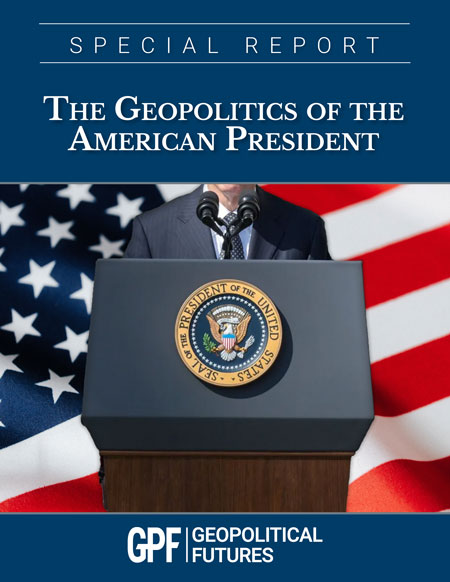In order to understand the current confrontation between Iran and the United States, we might begin with the Persian-Babylonian wars. Alternatively, we could begin with the decision of the United States to withdraw U.S. forces from Iraq after the election of Barack Obama. Efficiency demands the latter.
The U.S. invasion of Iraq in 2003 was carried out without opposition from Iran and indeed with covert support. Iraq and Iran had fought a brutal war during the 1980s, resulting in about 1 million casualties and costing a combined $5 billion. Not long after, Iraq would overestimate its position by invading Kuwait, leading to the first Gulf War. To Iran, the control of Iraq by Sunnis – a minority population and a sectarian rival no less – was an existential threat. Tehran was therefore delighted to see Saddam Hussein fall, since his absence would create an opportunity for it to dominate whatever government came next.
The war went differently. The U.S. blocked Shiite ambitions, fought the Sunnis and wound up in a crossfire between the two. Obama came into office committed to making it stop, planning to withdraw most but not all U.S. troops and to build an Iraqi army consisting of both Sunnis and Shiites that was friendly to the United States. (Iran, naturally, opposed the prospect.) But then came the Islamic State, which forced Washington to maintain troops in Iraq and caused Iran to intervene so as not to let a Sunni power take hold in Baghdad. The U.S. and Iran often cooperated with each other in the ensuing fight.
Yet, they were always wary of each other, in no small part because of Iran’s aspirations for a nuclear weapons program. Tehran’s pursuit of nuclear weapons resulted in an imposition of massive sanctions and in a widely advertised, U.S.-Israeli cyberattack on Iranian nuclear enrichment that was supposed to have set back the program dramatically. This reopened the possibility of keeping troops in the country, just as Donald Trump was taking office.
Trump said he wanted to reduce the U.S. military footprint in the Middle East but also favored regime change in Iran. This apparent contradiction had to do with the logic of a U.S. withdrawal. For Iran, directly controlling or at least neutralizing Iraq is a geopolitical imperative, but Tehran could not afford another war. After the fight against the Islamic State, the withdrawal of U.S. troops to a very small number left Iran in an extremely powerful position. At the same time, Iran maintained a number of pro-Iran groups in Lebanon, Syria, Yemen and Iraq, and was supporting the Assad regime even before the Russian intervention.
In other words, Iran had used its operations in various countries, coupled with the drawdown of U.S. troops, to create a massive sphere of influence commonly known as the “Shiite Crescent,” stretching from Iran to the Mediterranean and all the way to the Arabian Sea. This strategy was forwarded by a series of elite Iranian generals, such as Qasem Soleimani. Iran had gone from solely defending itself from Iraq to emerging as the major force in the Middle East.
Escalation With the U.S.
The American perception of Iran was formed largely in the post-1979 era, with the occupation of the U.S. Embassy in Teheran and the bombing of the Marine barracks in Beirut. While it’s true that Iran is responsible for both acts, it’s also true that Iran is more pragmatic than it is sometimes portrayed. It cooperates with the U.S. when it needs to and acts hostilely when it doesn’t. This is pretty normal behavior, but it creates confusion through which Washington has to navigate.
So when it was time to turn its attention to Tehran after the defeat of the Islamic State, Washington had two strategies. The first was to sponsor a coalition of states to undermine the growing Iranian sphere of influence. The key members of this odd coalition were Israel, Saudi Arabia and the United Arab Emirates. Israel was focused on attacking Iranian assets in Syria (and potentially in Lebanon). The Saudis and UAE were fighting Iranian proxies in Yemen, where a battle erupted between the country’s Sunnis, who had been largely out of power since the fall of Saddam, and the Shiites. Managing this battle fell to the U.S. soldiers and intelligence personnel still in the country.
The second response was to increase economic sanctions on Iran, not really because of its nuclear or missile programs, but to remind Iran of the risks of building its sphere of influence. The sanctions severely damaged the Iranian economy, and the protests, arrests and amnesties commonly associated with economic duress broke out. The government in Tehran was not existentially threatened by sanctions, but they were bad enough to cripple the economy, spark internal unrest and thus warrant a response. There were riots in Lebanon and Iraq, both threatening Iranian socio-political influence. In other words, the gains that Iran had made were in danger of being reversed, while the Iranian economy itself was weakening.
Iran needed a counter. The goal was to demonstrate the weakness of the United States as a guarantor of regional stability and the ability of the Iranians to impose counter-economic pressures and, in the worst of cases, cause a U.S. intervention. The latter would be an intervention with insufficient force and might solidify the government’s position, providing an otherwise unhappy populace and Iran-sponsored militias with a unifying cause.
The first attempt at this came in the Persian Gulf, where Iranians captured several tankers. The hope was that soaring oil prices and pressure on the U.S. from oil consumers would halt hostile operations against Iran. It was a low risk, high reward tactic that ultimately failed to achieve its goals, especially after the U.S. declined to launch an air attack on Iran in response and indirectly supported the U.K.’s seizure of an Iranian tanker off the coast of Gibraltar.
The second attempt was an escalation on the same theme: the attack on a Saudi oil facility through Yemeni Houthi militants. It was also designed to boost oil prices and encourage the Saudis to reconsider their relationship with the U.S.-backed coalition. Once more, the attack didn’t achieve Iran’s ultimate objective.
Iran was in an increasingly precarious situation. Domestic unrest due to sanctions persisted. Its sphere of influence was under pressure on every front, particularly in Lebanon and Iraq where anti-Iran sentiment was growing.
Tensions Come to a Head
The deterioration of Iran’s position demanded that the government consider more assertive actions, particularly in Iraq. Its answer, as it had been so many times before, was the Quds Force, an elite branch of Iran’s Islamic Revolutionary Guard Corps, led by none other than Soleimani. Like U.S. special operations, they specialize in training and maintaining allied forces abroad – including, in Iran’s case, Hezbollah and the Popular Mobilization Forces in Iraq.
When U.S. bases were attacked, the assumption was that the attacks were planned and perhaps carried out by Quds-backed militias, such as the PMF and Kataib Hezbollah. Whether the U.S. knew before or after the attacks that Soleimani was in Iraq after a trip to Syria, it was obvious that major operations were being planned against U.S. diplomatic and military personnel in Iraq, Lebanon and Syria. The capture of Soleimani would be catastrophic to Iran. Therefore, the American read that the Iranians were being pressed to the wall was confirmed by his presence. Iran was taking a major risk given his knowledge of its operational capabilities. That meant that the Iranians had decided on escalating beyond prior attacks. The Quds Force’s specialty was attacking specific facilities to undermine military or intelligence capability or to achieve psychological and political ends. In any case, seeing him near Baghdad Airport likely told U.S. intelligence not only that he was there because the situation was difficult, but that he was there to correct the imbalance of Iranian power in the Levant. In other words, he was working with his Iraqi counterpart to carry out significant operations. It followed that the U.S. didn’t want these operations, whatever they were, carried out, and that killing him was a military necessity.
All of this has to be framed in the strategic context. The U.S. does not want to engage in extensive operations in the region. Washington is depending on sanctions and proxies. Iran still wants to maintain its sphere of influence into the Mediterranean, but above all, an even greater priority is the neutralization of Iraq and the stabilization of its own country. Iran can’t afford to allow Iraq to become a bastion of anti-Iran forces, nor can it wage a conventional war against the U.S., Israel, Saudi Arabia and the UAE. Iran must therefore use what it has used so effectively in the past: special and covert operations. It follows that Iran will take its time to respond. It also follows that the U.S. and its allies, having bought time by killing the head of the Quds Force, must use the time effectively.






 The Geopolitics of the American President
The Geopolitics of the American President